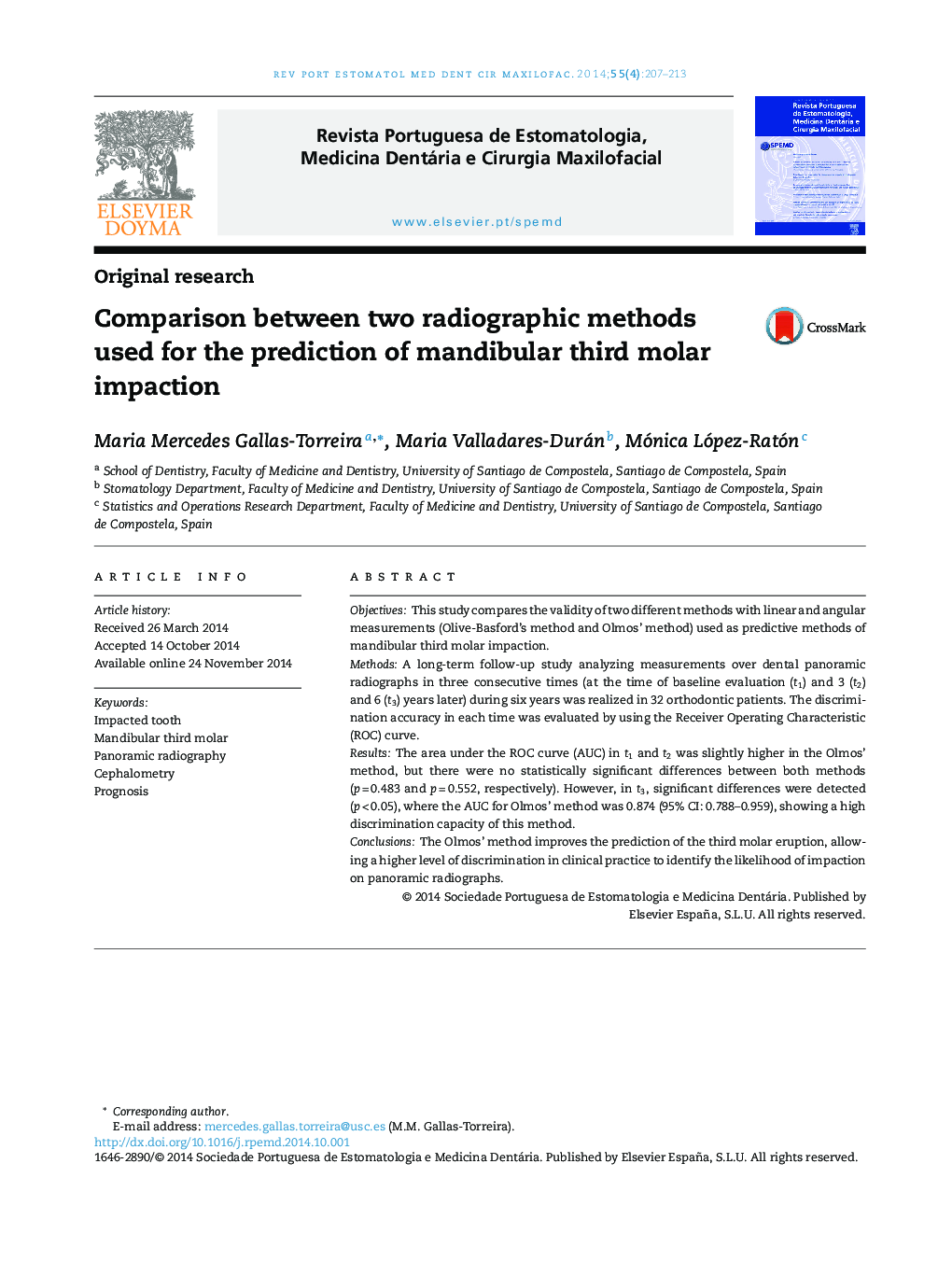| کد مقاله | کد نشریه | سال انتشار | مقاله انگلیسی | نسخه تمام متن |
|---|---|---|---|---|
| 3173543 | 1200023 | 2014 | 7 صفحه PDF | دانلود رایگان |
ObjectivesThis study compares the validity of two different methods with linear and angular measurements (Olive-Basford's method and Olmos’ method) used as predictive methods of mandibular third molar impaction.MethodsA long-term follow-up study analyzing measurements over dental panoramic radiographs in three consecutive times (at the time of baseline evaluation (t1) and 3 (t2) and 6 (t3) years later) during six years was realized in 32 orthodontic patients. The discrimination accuracy in each time was evaluated by using the Receiver Operating Characteristic (ROC) curve.ResultsThe area under the ROC curve (AUC) in t1 and t2 was slightly higher in the Olmos’ method, but there were no statistically significant differences between both methods (p = 0.483 and p = 0.552, respectively). However, in t3, significant differences were detected (p < 0.05), where the AUC for Olmos’ method was 0.874 (95% CI: 0.788–0.959), showing a high discrimination capacity of this method.ConclusionsThe Olmos’ method improves the prediction of the third molar eruption, allowing a higher level of discrimination in clinical practice to identify the likelihood of impaction on panoramic radiographs.
ResumoObjetivosEste estudo compara a validade de 2 métodos diferentes, com medidas lineares e angulares (método de Olive-Basford e método de Olmos) usados como métodos preditivos da impactação do terceiro molar mandibular.MétodosUm estudo de seguimento analisa as medições sobre radiografias panorâmicas em 3 vezes consecutivas (no momento da avaliação inicial [T1], 3 anos [T2] e 6 anos [T3]), durante 6 anos, realizado em 32 pacientes ortodônticos. A precisão da discriminação em cada tempo foi avaliada usando o Receiver Operating Characteristic (ROC).ResultadosA área sob a curva ROC (AUC) em T1 e T2 foi ligeiramente superior no método de Olmos, mas não houve diferenças estatisticamente significativas entre os 2 métodos (p = 0,483 e p = 0,552, respetivamente). Entretanto, em T3, foram detetadas diferenças significativas (p < 0,05) em que a AUC para o método de Olmos foi 0,874 (IC 95%: 0,788-0,959), que mostra uma alta capacidade de discriminação deste método.ConclusõesO método de Olmos demonstrou permitir uma maior capacidade de previsão de erupção do terceiro molar na prática clínica e da probabilidade de impactação através da análise de radiografias panorâmicas.
Journal: Revista Portuguesa de Estomatologia, Medicina Dentária e Cirurgia Maxilofacial - Volume 55, Issue 4, October–December 2014, Pages 207–213
